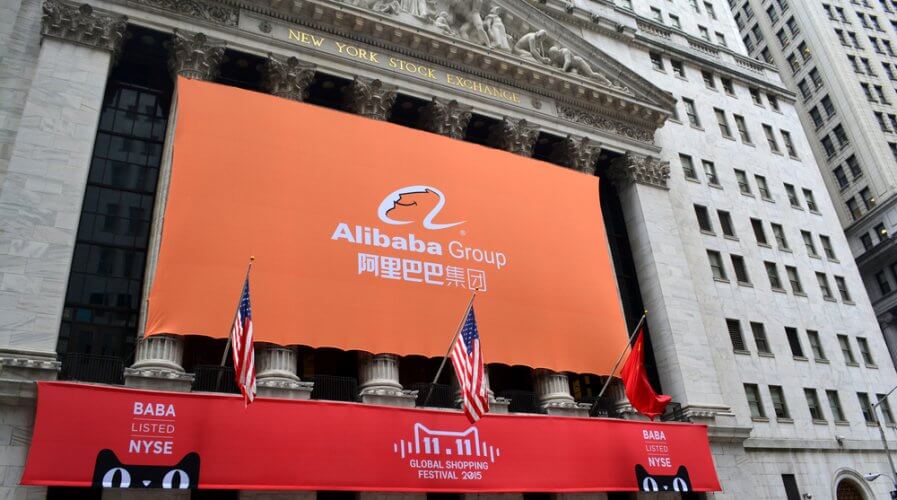
Shoppers in China are evolving. Unless Alibaba catches up, it’ll risk being left behind. Source: Shutterstock
Here’s what Alibaba’s 11.11 day online sale is worth
ALIBABA CEO Jack Ma conceptualized the Singles’ Day sale held on Nov 11 every year in the mid-2000s and launched the first annual Singles’ Day sale in 2009.
The sale was an instant hit, which is why it was brought back in 2010 and every year since.
The company’s two shopping platforms Tmall and Taobao Marketplace brought in revenues worth billions, and now, with AliExpress and Lazada in Southeast Asia joining in, the total revenue is expected to grow significantly.
Figures from 2009 up to 2013 are somewhat sketchy, unfortunately.
Local sources suggest that Taobao’s earnings on this particular day — for the 27 sellers participating in the Singles’ Day sale — was CNY50 million (7.22 million) in 2009, which rose to CNY936 million (US$136 million) in 2010.
Sales almost breached the billion-dollar mark reaching CNY5.2 billion (US$750 million) in 2011, grew slightly to touch CNY5.9 billion (US$850 million) in 2012, and finally hit CNY35 billion (US$5 billion) in 2013.
Figures for Tmall always reached roughly 60 percent of Taobao’s sales up till 2013 — where the difference was quite significant. It was this year that Alibaba’s Singles’ Day also surpassed its great American equivalent “Cyber Monday”.
Judging by the trend, something changed significantly between 2012 and 2013. It seems as though this change was driven by the sudden rise in (mobile) internet penetration in the country.
In 2010, China had about 450 million internet users. That number grew to 564 million in 2012 and reached 618 million internet users in 2013 — of that 618, 500 million were mobile internet users. Today, that figure has climbed to 800 million internet users, 98 percent of whom are mobile.
The company has actually spotted this trend, and it’s Southeast Asian brand Lazada has recently told media that it’s pushing for a more mobile-first approach as Singles’ Day becomes more of a trend outside China.
Since 2013, Alibaba has provided quite clear figures to media — highlighting the e-commerce opportunity it brings to retailers and sellers on its platforms. The interactive graph below shows just how big the Singles’ Day sale grew.
In 2014, for example, Alibaba almost doubled its revenues from the Singles’ Day sale in 2013 — pulling in US$9.3 billion on the company’s two e-commerce platforms. The company also disclosed that nearly 30,000 merchants would deliver 278.5 million packages as a result of the grand sale.
The next year, figures surged 60 percent, touching US$14.3 billion — of which 68 percent were ordered through mobile devices. At a press conference after the Singles’ Day sale in 2015, CEO Ma told media that the event’s annual growth in the future should be over 50 percent.
In 2016, Alibaba, unfortunately, failed to deliver on its CEO’s word but still managed to rake up a 32 percent growth from the previous year. Sales totaled US$17.73 billion. CEO Ma, however, said he was relieved that numbers had dwindled as he worried about the logistics of the goods sold.
Last year, the company failed to deliver on its CEO’s expectations yet again — despite the massive 39 percent increase in sales totaling US$25.3 billion. The combined total of Americ’a’s grand Thanksgiving Thursday, Black Friday, and Cyber Monday sale reeled in US$14.5 billion.
It accepted orders from 225 countries and regions on sale day and helped at least 82 brands (including Nike, Xiaomi, and Uniqlo) achieve more than CNY100 million (US$14.5 million) in sales each. About 90 percent of transactions were performed on a mobile device, and at its peak, Alibaba’s processors handled 256,000 transactions per second.
This year, the company expects big returns — with AliExpress and Lazada joining in to promote the Singles’ Day sale and attract shoppers from across the world. It’s a massive opportunity for e-commerce companies selling on these platforms, one that many have been preparing for since the end of last year’s sale.
This is the second in a series of stories that Tech Wire Asia will produce to help e-commerce readers better understand and plan for Singles’ Day this year. Come back tomorrow for advice on how to prepare for the sale.
READ MORE
- Vital lessons from 11.11 and forecast for the 12.12 sale
- Is Singles’ Day really not SEA’s biggest shopping festival?
- Alibaba deploys its biggest robot warehouse for 11.11 sale
- Here’s how you can use digital marketing to win big on Singles’ Day
- How e-sellers can make the most of Alibaba’s Singles’ Day Sale




